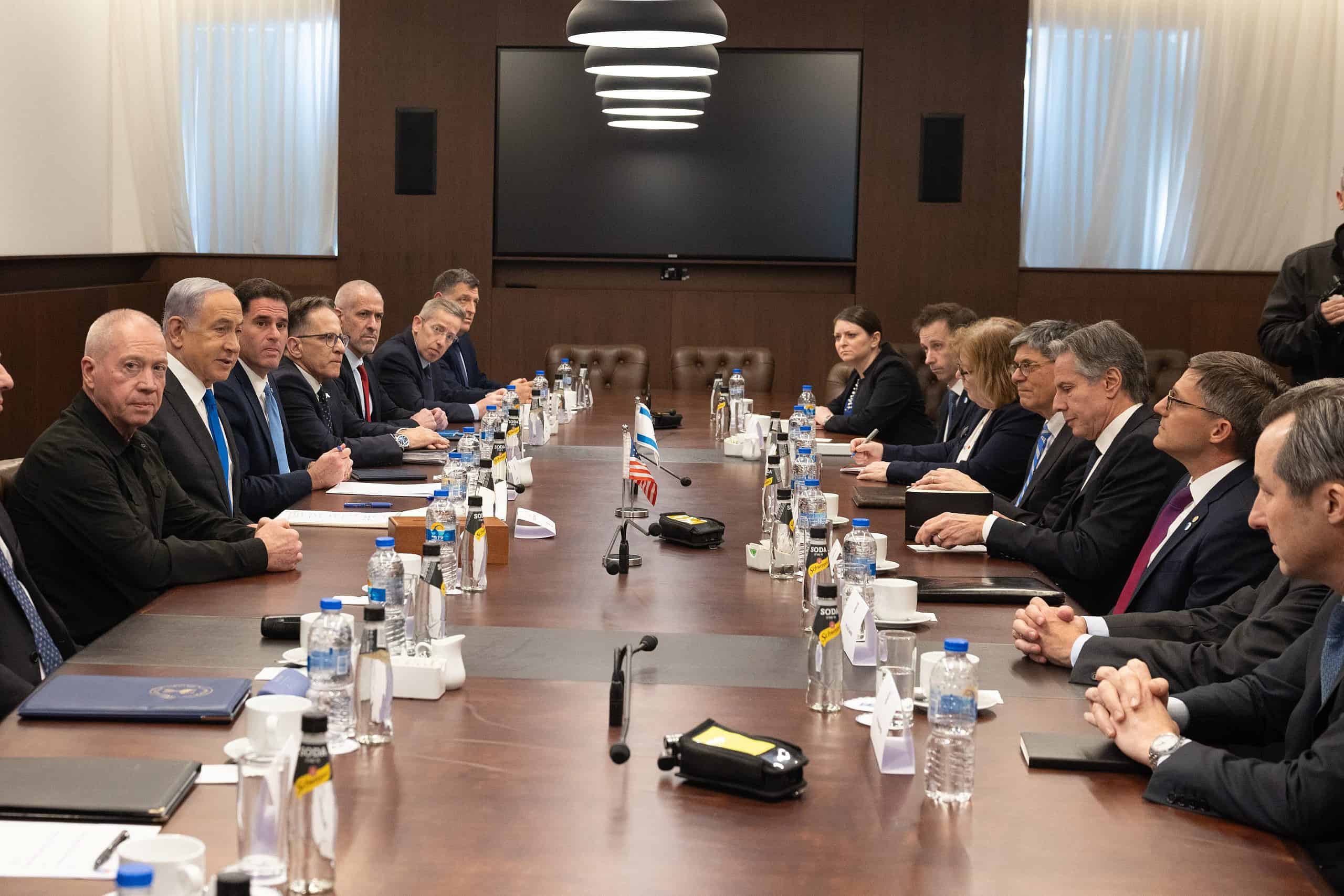While there are some “clear non-starters” in Hamas’s response to the renewed hostages-for-ceasefire framework proposed by mediators, it “creates space for an agreement to be reached,” U.S. Secretary of State Antony Blinken told reporters on Wednesday night in Israel.
“We had an opportunity today to discuss with the Israeli government the response that Hamas sent last night,” said Blinken, whose press conference was delayed for more than two hours as he met privately with Israeli Defense Minister Yoav Gallant at the Kirya military headquarters in Tel Aviv.
“The sheer agony of not knowing the fate of your loved one; it’s almost unimaginable, and I know that the pain is almost unbearable. So we’ve been intensely focused since day one on getting the hostages, all the hostages, back with their families where they belong,” he added.
The American diplomat touched down in Tel Aviv overnight on Tuesday for his seventh visit to the region since Hamas’s massacre of 1,200 people in Israel’s northwestern Negev region. Before arriving in the Jewish state, Blinken visited Qatar, Egypt and Saudi Arabia.
His tour coincided with the four-month anniversary of Hamas’s Oct. 7 terror attacks and kidnapping of 253 hostages, which prompted the Israel Defense Forces to launch an unprecedented ground operation against the terror group in the Gaza Strip some 20 days later.
According to official Israeli figures, 136 hostages remain in Gaza. At least 31 of them are confirmed dead, most of them killed on Oct. 7.
Jerusalem is assessing unconfirmed information indicating that another 20 additional captives have also been killed.
‘Essential to go ahead with truce deal’
Speaking at a press conference in Doha alongside Qatari Prime Minister Sheikh Mohammed bin Abdulrahman Al Thani on Tuesday, Blinken confirmed that Hamas had responded to the proposed hostages deal.
“I would like to inform the media that we have received a reply from Hamas with regards to the general framework of the agreement with regard to hostages,” said Sheikh Mohammed. “We are optimistic, and we have delivered the response to the Israeli party.”
Blinken stated that Washington was reviewing Hamas’s reply and stressed that it was “essential” to go ahead with a truce deal.
Hamas has since presented a new counteroffer, repeating demands for a permanent ceasefire and the release of numerous terrorists from Israeli prisons, which Jerusalem swiftly rebuffed as “delusional demands.”
On Wednesday, Blinken and Israeli Prime Minister Benjamin Netanyahu held a “long and in-depth meeting in private” in Jerusalem. Following the one-on-one encounter, an extended meeting took place with the participation of Gallant and other senior officials.
Blinken warned Netanyahu and Gallant that the White House is “very concerned” about the looming expansion of the IDF operation into the southernmost Gaza city of Rafah, Axios reported.
According to the U.S. State Department, Blinken was also scheduled to meet separately with IDF Chief of Staff Lt. Gen. Herzi Halevi, followed by a late afternoon meeting with President Isaac Herzog.
The private meeting with Halevi was nixed, however, amid reports that Netanyahu was against a private meeting between a foreign diplomat and the military chief in the absence of elected officials.
The unusual request to meet privately with Halevi is being construed as an effort by Blinken to circumvent the political echelon and possibly receive a different perspective on the state of the war against Hamas.

After meeting with Herzog, Blinken traveled to Ramallah, where he spoke with Palestinian Authority chief Mahmoud Abbas about “the latest developments in the Palestinian arena and the ongoing efforts to stop the Israeli aggression,” according to the P.A.’s Wafa news agency.
Abbas “affirmed his rejection of the forced displacement of the Palestinian people … warning of the consequences of any military operation that might be carried out by the occupation forces in the city of Rafah to pressure citizens and force them to flee,” per Wafa.
The P.A. leader also called on the Biden administration to support Ramallah’s attempt to gain “full membership in the United Nations by a decision of the U.N. Security Council” and help stop alleged “attacks of terrorist colonists” in Judea, Samaria and Jerusalem.
‘Lack of a road map for ending the fighting’
Blinken told reporters he pressed Abbas on improving “governance and accountability,” including through the implementation of a recently announced series of administrative reforms.
The White House, which was initially supportive of Israel’s war effort in the wake of the Oct. 7 attacks, has since grown increasingly critical. According to a Feb. 1 Wall Street Journal report, Biden’s shift stems from frustration with the number of casualties, Palestinians being displaced from their homes, “and the lack of a road map for ending the fighting.”
The civilian death toll remains “too high,” Blinken claimed on Wednesday night. In Jerusalem, he highlighted “key steps that Israel must take,” including the opening of the Erez Crossing with northern Gaza and allowing additional aid from Jordan to enter the Strip.
While Israelis have been “demonized” by Hamas and other terror groups, “that cannot be a license to demonize others,” he added.
During his previous visit to Israel, Blinken pushed for an “imminent” transition to the “next phase” of the military operation against Hamas in Gaza. The IDF subsequently confirmed that it had started transitioning to a campaign involving fewer troops and airstrikes.


























